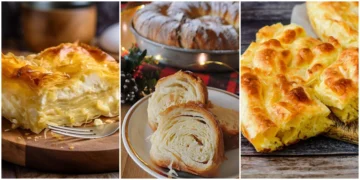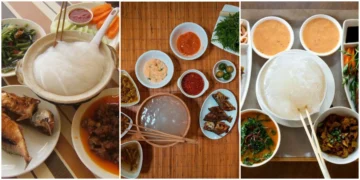Curacao, an island jewel of the southern Caribbean known for its vibrant colonial architecture, pristine beaches, and vibrant cultural fusion, also boasts an extensive culinary history that is just as varied and colorful. One such dish stands out as an emblematic representation of local identity and culinary creativity: Keshi Yena, the best food of Curacao. Originally translated from Papiamento as “stuffed cheese,” Keshi Yena has evolved over generations into an exquisite meal featuring local cheeses with an aromatic spiced filling. Keshi Yena serves not just food–it serves as a celebration of past traditions. It symbolizes spirit as well as an ongoing testament to Curacao’s resourcefulness and industriousness.
Why Keshi Yena Is the Ideal Choice?

Keshi Yena has quickly earned its esteemed place as one of Curacao’s signature dishes by expertly marrying simple ingredients with complex flavors. What sets this dish apart is its ability to transform an ordinary cheese wheel into an extravagant delicacy with its golden crust boasting slightly crisp textures inside boasting hearty fillings of meat, vegetables, and spices – creating an extraordinary culinary experience! This delightful combination captures the true spirit of Caribbean cuisine: bold yet comforting flavors balanced perfectly in harmony reminiscent of its rich cultural legacy!
Keshi Yena is more than just a culinary masterpiece – it’s also an emblematic cultural symbol. Prepared during festive occasions and family gatherings, its tradition serves to remind Curacaoans of their island’s colonial past and blend of indigenous, African, and European influences. Prep takes place around family tables while generous portions reflect Curacaoans’ communal spirit and warm hospitality. Keshi Yena provides more than just nourishment – each bite invites them to experience history and culture first-hand!
Key Ingredients of Keshi Yena (Best Food of Curacao)
- Meat: Traditionally, the filling consists of shredded chicken; however, variations including beef or combinations thereof exist. Cooked until it reaches tenderness before being seasoned to perfection for flavorful results.
- Aromatics: Onions, garlic, and sometimes bell peppers are sauteed together to form an aromatic base that adds depth and richness to the filling.
- Tomatoes and Olives: Diced tomatoes add subtle sweetness and acidity, while chopped olives add briny complexity reminiscent of Curacao’s Mediterranean influences in its cuisine.
- Raisins and Capers: For an extra sweet boost, pair raisins with capers to balance out the dish’s savory ingredients.
- Herbs and Spices: To enhance flavors, blends of spices like black pepper, nutmeg, and allspice are often combined for optimal results. Fresh herbs like parsley or cilantro often provide additional brightness.
- Add Extra Enhancers: In some recipes, an addition of wine or olive oil helps enhance texture and meld flavors together for optimal results.
Prepare of Keshi Yena

- Hollowing the Cheese: To begin this process, start with a large wheel of cheese. First, the center should be partially hollowed out before setting aside any of the excess cheese. This step ensures that none of these essential ingredients go to waste! This allows the shell to serve its intended function without losing precious ingredients along the way.
- Preparing the Filling: In a large skillet, finely chopped onions and garlic are sauteed in olive oil. Shredded chicken (or another preferred meat), diced tomatoes, olives, raisins, capers, black peppercorns, nutmeg, and allspice can then be stirred into the mixture while crumbled cheese from your hollowed wheel is mixed into it for an aromatic, delicious stuffing! This combination yields both hearty fillings!
- Stuffing Cheese: Once the filling is mixed, it is carefully spooned back into its hollowed-out cheese shell. This process should take no more than several minutes per cheese shell to ensure its shape remains unaltered by filling.
- Baking: Once assembled, the cheese wheel should be baked at an oven preheated to an intermediate temperature (approximately 350degF/175degC) until its outer cheese becomes slightly crisp and golden-brown while its filling heats thoroughly and flavors combine into an irresistibly satisfying experience. Baking time may range between 20 and 30 minutes depending on its size and the amount of filling within it.
What Sets Keshi Yena Apart From The Competitors?

Keshi Yena stands out among many dishes for its creative use of cheese in both ingredient and vessel capacities. Cheese serves not only as an ingredient but also showcases both quality cheese and lavish filling. It creates an irresistibly delightful contrast in texture and taste between its slightly caramelized cheese crust and flavorful filling.
Keshi Yena also showcases Curacao’s multicultural influences that have helped form its culinary identity. Drawing upon African and European culinary traditions, its flavorful combination embodies what defines Curacao cuisine. The cultural exchange, resourcefulness and innovation are reflected through its ingredients. From imported Dutch cheeses to locally grown produce and spices that tell their own unique tale of flavor fusion.
History of Keshi Yena (Best Food of Curacao)
Keshi Yena’s origins can be found within Curacao and the wider Caribbean region, specifically during Dutch colonization. When large wheels of cheese were imported by them into Curacao by way of import from Holland, resourceful cooks quickly found ways to reuse these large wheels by hollowing them out and filling them with meat, vegetables, and spices from leftover meals – this became what has since been known as Keshi Yena.
Keshi Yena was prepared during occasions and family gatherings to mark special events to spread celebration and communal joy. It remains a cherished part of Curacaoan cuisine, honoring its past while creating delicious new culinary delights.
Curacao Delights Are Authentic Dishes
- Keshi Pinda: Keshi Pinda showcases the island’s affinity for the creative use of cheese.
- Funchi: Similar to polenta, Funchi is often served alongside stews or seafood dishes as an accompanying side dish.
- Stoba di Kabritu: A comforting goat stew featuring locally available spices and slow-cooked tenderness.
- Iguana Stew: An iconic dish made with locally available iguana meat to showcase island cooking’s resourcefulness.
- Tropical Fruit Delectacies: Fresh fruit salads and desserts using local fruits like papaya, mango, and pineapple.










Discussion about this post